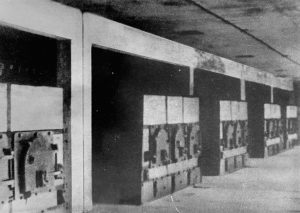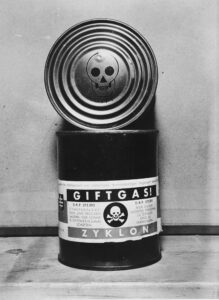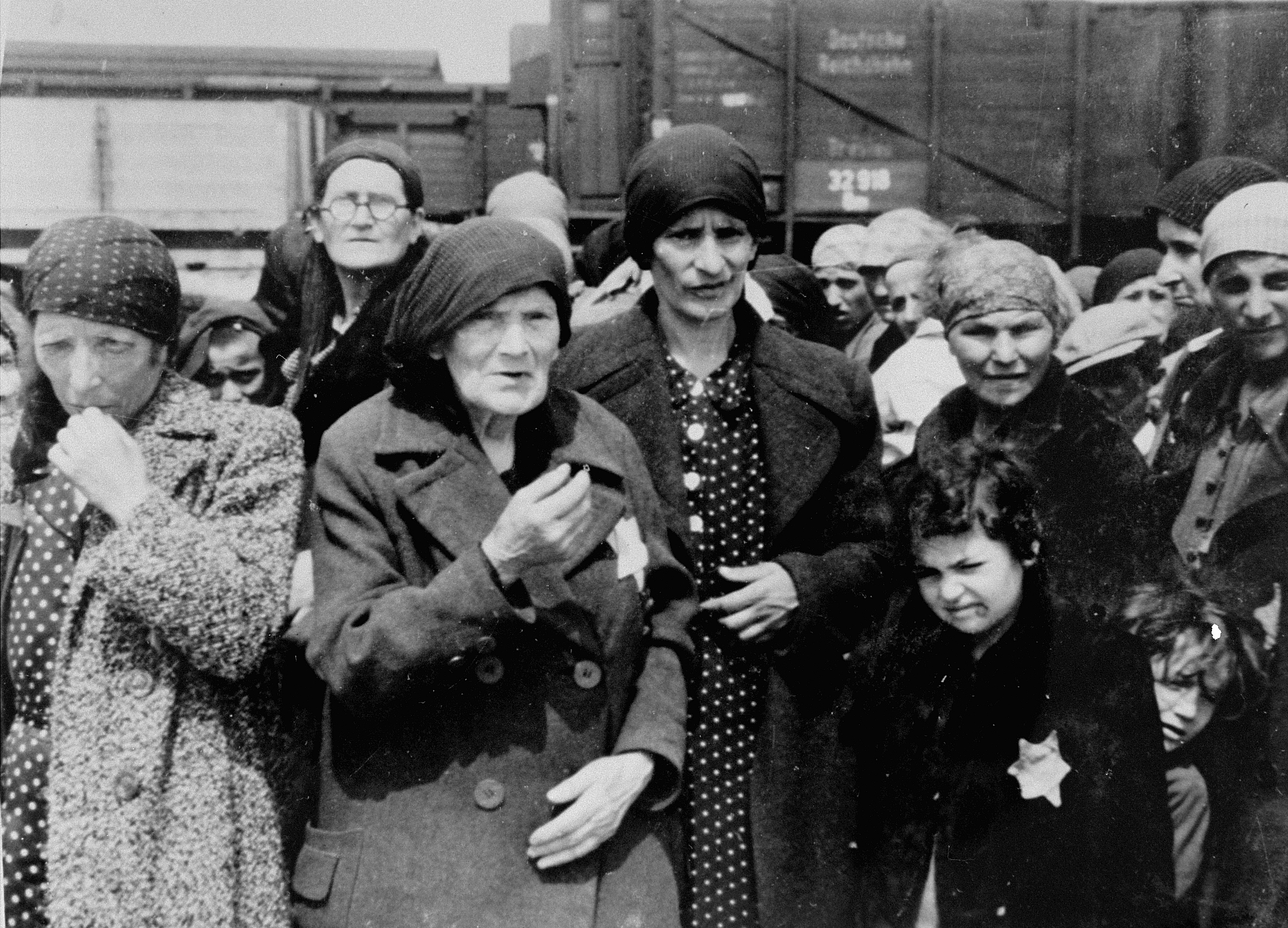Part 4D: Extermination Camps

Jewish prisoners standing at the entrance to the gas chambers in Birkenau (Auschwitz II) at the Auschwitz-Birkenau extermination camp in Nazi-occupied Poland, date unknown. Photo credit: Yad Vashem #5318/234
To more efficiently kill all Jews living in Europe as part of the Final Solution, Nazi Germany created six specialized extermination camps in occupied Poland. These camps functioned as death factories, where millions of people were shot, hanged, starved, tortured, raped, and poisoned in gas chambers through an assembly-line style of mass murder. Nazi-occupied Poland was selected as the location for these camps because of its large native Jewish population, but Jews from across German-ruled Europe were brought there to be killed.

A row of ovens at one of the crematoria at the Auschwitz-Birkenau extermination camp in Nazi-occupied Poland, circa 1943. Photo credit: USHMM #19444
The first killing center opened in December 1941 near the village of Chelmno, where the Nazis used mobile gassing vans to murder more than 172,000 Jews, Poles, and Roma and Sinti. Other camps were built with large gas chambers, including Treblinka (about 925,000 victims), Belzec (about 435,000 victims), Sobibor (about 200,000 victims), and Majdanek (about 78,000 victims).

Two canisters of Zyklon B found in the Dachau concentration camp and clearly marked as poison with a skull and crossbones. Photo credit: USHMM #75047.
Auschwitz-Birkenau, the largest and most notorious extermination camp, was a massive complex with three main sites (Auschwitz, Birkenau, and Monowitz) that included concentration, extermination, labor, and satellite camps. It initially began as a camp to detain Polish prisoners, but as Nazi brutality increased, it ultimately became a central site for the genocide of Jews because of its location along important railway lines. Approximately 1.1 million people (including about 960,000 Jews and 74,000 Poles) were murdered at Auschwitz-Birkenau. In total, at least 2.7 million Jews were killed in Nazi death camps between 1941 and 1945. These deaths account for nearly half of the 6 million Jewish people killed by Nazi Germany during the Holocaust.

